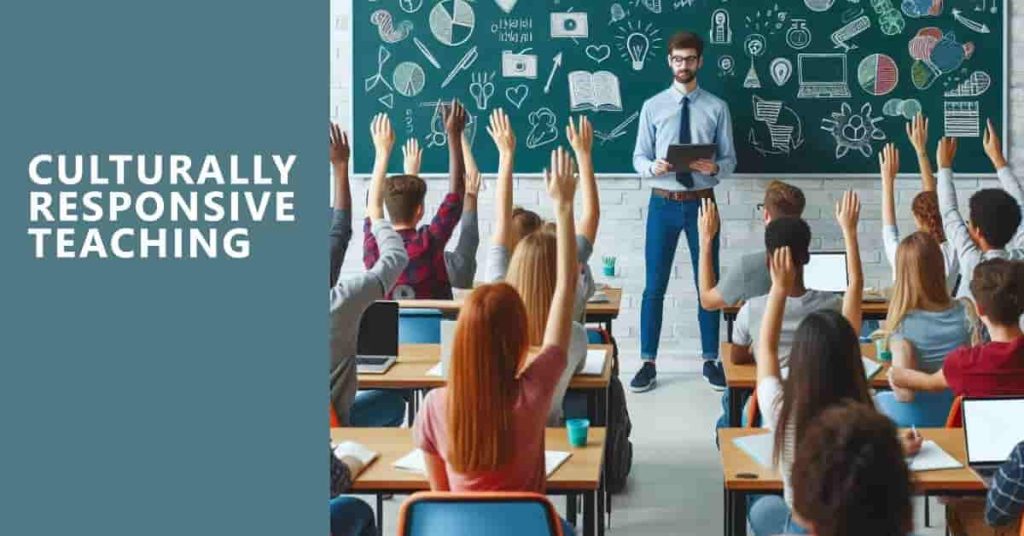Effective Strategies for Managing Classroom Diversity: A Focus on Valdymas College
In today’s globalized world, classrooms are becoming increasingly diverse, with students from various cultural, ethnic, and socioeconomic backgrounds coming together to learn. At Valdymas College of Advanced Studies, we recognize that managing classroom diversity is not only essential for fostering an inclusive learning environment but also for preparing students to thrive in a multicultural society. By embracing diversity and implementing effective strategies, we ensure that every student feels valued and supported in their academic journey. In this blog post, we will explore the strategies employed at Valdymas College to manage classroom diversity and create a conducive learning environment for all students.
1️⃣ Culturally Responsive Teaching

One of the most effective strategies for managing classroom diversity is adopting culturally responsive teaching methods. Culturally responsive teaching involves recognizing the cultural backgrounds of students and incorporating their experiences into the learning process. At Valdymas College, our teachers are trained to use culturally relevant materials, examples, and teaching styles that resonate with students from diverse backgrounds.
This approach not only makes learning more relatable but also helps students feel seen and respected. Research by Gay (2000) emphasizes that culturally responsive teaching improves student engagement and academic success, particularly for students from minority groups. At Valdymas, we actively promote inclusivity by integrating diverse perspectives into our curriculum and encouraging students to share their cultural experiences during class discussions.
2️⃣ Differentiated Instruction
Every student learns differently, and recognizing these differences is crucial in managing a diverse classroom. Differentiated instruction involves tailoring teaching methods and learning activities to meet the individual needs of students. At Valdymas College, we use differentiated instruction to ensure that all students, regardless of their learning styles or abilities, have access to the curriculum and can achieve academic success.
By offering various learning resources, such as visual aids, interactive lessons, and hands-on activities, we cater to diverse learning preferences. This approach allows students to engage with the material in ways that best suit their needs. Tomlinson (2001) highlights that differentiated instruction promotes equity in the classroom by ensuring that all students receive the support they need to succeed.
3️⃣ Promoting Inclusivity and Mutual Respect
At Valdymas College, we place a strong emphasis on creating an inclusive environment where students feel safe, respected, and valued. One of the ways we achieve this is by fostering mutual respect among students and promoting an atmosphere of acceptance. Teachers encourage open dialogue and discussions about diversity, helping students understand and appreciate different perspectives.
Through workshops, seminars, and activities focused on diversity and inclusion, we educate students on the importance of empathy and cultural sensitivity. These initiatives are designed to build a sense of community within the classroom, where students can learn from each other’s experiences and develop the social skills needed to work in diverse teams. Research by Banks (2001) supports the idea that promoting inclusivity enhances students’ social and emotional development, preparing them for success in multicultural environments.
4️⃣ Addressing Bias and Stereotypes
Addressing bias and stereotypes is a critical component of managing classroom diversity. At Valdymas College, we actively work to challenge stereotypes and prevent bias from affecting the learning environment. Through anti-bias training for both teachers and students, we ensure that discriminatory behaviors are recognized and addressed.
Our teachers are trained to recognize and challenge unconscious biases that may affect their interactions with students. This training helps create a more equitable classroom, where all students have the opportunity to succeed. A study by Derman-Sparks and Edwards (2010) highlights the importance of addressing bias in education to foster a more just and inclusive society.
5️⃣Encouraging Collaborative Learning
Collaborative learning is another effective strategy for managing classroom diversity. When students from different backgrounds work together on projects or group assignments, they learn to appreciate each other’s strengths and perspectives. At Valdymas College, we promote collaborative learning by incorporating group activities that encourage teamwork and cooperation.
By working in diverse teams, students develop important social skills such as communication, problem-solving, and conflict resolution. These experiences not only enhance their academic performance but also prepare them for future careers in diverse workplaces. A study by Slavin (1996) found that collaborative learning improves student outcomes and fosters a sense of belonging, particularly in diverse classrooms.
Conclusion
Managing classroom diversity requires a thoughtful and intentional approach to teaching and learning. At Valdymas College of Advanced Studies, we are committed to creating an inclusive environment where all students can thrive, regardless of their backgrounds. Through culturally responsive teaching, differentiated instruction, promoting inclusivity, addressing bias, and encouraging collaborative learning, we ensure that our students are well-prepared to succeed in a diverse world. By embracing diversity, we not only enhance the educational experience but also equip our students with the skills they need to navigate an increasingly globalized society.
Reference
- Banks, J. A. (2001). Cultural diversity and education: Foundations, curriculum, and teaching. Allyn & Bacon.
- Derman-Sparks, L., & Edwards, J. O. (2010). Anti-bias education for young children and ourselves. NAEYC.
- Gay, G. (2000). Culturally responsive teaching: Theory, research, and practice. Teachers College Press.
- Slavin, R. E. (1996). Research for the future: Research on cooperative learning and achievement: What we know, what we need to know. Contemporary Educational Psychology, 21(1), 43-69.
- Tomlinson, C. A. (2001). How to differentiate instruction in mixed-ability classrooms. ASCD.



